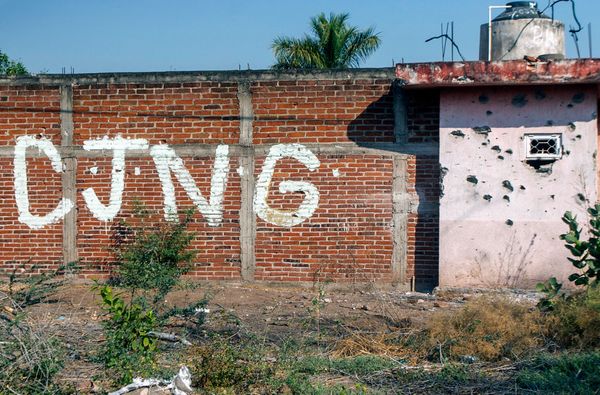
Groups of urban villages on the outskirts of the Chinese southern metropolis Guangzhou count fast fashion retailer Shein as so key to their fortunes, locals regularly call themselves residents of “Shein villages”.
Shein has quickly become a retail giant in recent years, now selling over $30bn worth of goods annually. The Chinese company’s model has been built on cheap prices and convenient trade rules, such as the US “de minimis” exemption that allows low-cost imports to enter the country duty-free.
Equally important is the efficient supply chain, powered by hundreds of buzzing factory floors. Here, thousands of “villagers” toil for hours in conditions that have regularly been called into question. These employees react in real time to online orders for leopard print palazzo pants or peasant blouses at unbeatable prices, as Shein only grows in success.
On a recent visit to Shein villages in Panyu District, however, the mood was glum. Three factory bosses along with four local downstream suppliers said Shein’s local orders were in decline, pointing the finger at moves to diversify production to Vietnam.
Trump tariffs come to Shein villages
As companies reliant on China for production reel from tariff rates of 145 per cent and cancellation of the de minimis threshold for packages from China, questions are being asked about how long the good times can keep rolling – for Guangzhou’s factories and also for Shein.
.jpeg?trim=0%2C0%2C0%2C0)
Factory owner Mr Li has been in business since 2006, manufacturing apparel for both the Chinese and international markets. He has been working with Shein for five years and says orders from the firm this year have dropped by 50 per cent as more orders have moved to Vietnam.
“The impact is quite obvious,” he said, “tariffs are not something that we can see an end to for the time being, and we don’t know what will happen next.”
Here, thousands of small contract manufacturers produce small batches of crop tops and mini-skirts for a few yuan apiece that are then quickly shipped to young consumers around the globe paying a few dollars each for the same items.
“To be honest, cross-border [ecommerce] has been crazy in the past two years. Before, there was no such business in China,” says factory owner and Shein supplier Mr Hu, 56. “It was Xu Yangtian of Shein who made it happen,” he said, referring to the Chinese-Singaporean entrepreneur and founder of Shein. “He caused it to emerge.”
Hu and Li declined to use their full names for privacy reasons.
Shein, which recently secured UK approval for a London IPO that can only go ahead with a nod from Chinese regulators, is also investing 10 billion yuan ($1.37bn) in industrial projects in South China, including a $500m supply chain hub in Guangzhou’s Zengcheng district.

Both factory bosses confirmed earlier media reports that Shein has begun incentivising its biggest suppliers to move production to Vietnam with promised minimum orders and longer lead times, having been told directly by Shein or informed by other suppliers who were briefed on the plans.
“Since Chinese new year, when Trump came to power, Shein has been asking many leading factories to find ways to open factories in Vietnam,” Hu said, adding that his firm, which employs about 100 people and manufactures 200,000-300,000 pieces per month for Shein during busy periods, was too small to be considered a candidate for an incentivised move.
In a statement replying to Reuters questions, Shein said reports that it was shifting supply chain capacity out of China were “untrue” and pointed to a growth in suppliers in China, up to 7,000 from 5,800 last year.
The firm did not answer questions relating to incentives for major Chinese suppliers to open additional factories in Vietnam, nor the impact this might have on order volumes for other Chinese suppliers.
Shein’s catch-22
A move to source more from Vietnam could help Shein to continue sending goods to the U.S. at lower tariff rates or without import duties at all for packages sent under de minimis – though there is no guarantee the threshold will remain in place for goods sent from Vietnam.
But it also creates a catch-22 situation for the company – a potentially costly and time-consuming one in an industry in which price and time are essential.

“The diversification of its sourcing base and a significant change in its business model will have to go hand in hand for Shein,” said Sheng Lu, professor of fashion and apparel studies at the University of Delaware.
Without fundamentally changing its business model of pumping out thousands of new styles in small batches and shipping them quickly to end consumers, Shein can’t diversify its supply chain; and without diversifying the supply chain away from South China, it can no longer ship products direct to U.S. consumers at low, tariff-free prices, Lu said.
“The model is really genius when you think about it ... but to move that whole business model, that’s going to definitely put a hiccup in their turnaround times and their costs,” said Alison Layfield, director of product development at ePost Global, which helps businesses manage cross-border shipping and customs challenges.
“Of course, they will want to pass those costs onto consumers but ... then consumers are not going to be ordering at the quantity and the price point that they have in the past,” she added.
For factory owner Li, the capital investment involved in a move to Vietnam, combined with what he said was less productive labour there compared with China, makes it an unappealing choice.
“Here we can finish 1,000 pieces of clothing in one day – there, it takes a month,” he said.
While he plans to lean more heavily on his factory supplying the domestic market, Li said that for some of his compatriots, there is little option left: “They have only two choices. One is to go bankrupt, and the other is to go to Vietnam.”
Half a million UK GP records to become accessible to researchers from China
Ukraine war latest: Trump ‘slashes Kyiv repayments bill’ to open up minerals deal
Trump officials won’t share evidence accusing Maryland father of ‘human trafficking’
Trump latest: China warns president to ‘stop whining’ over tariffs
Inside Musk’s plan to make a ‘legion’ of babies and get to Mars to save civilization
Service members killed in ‘civilian vehicle’ near southern border







